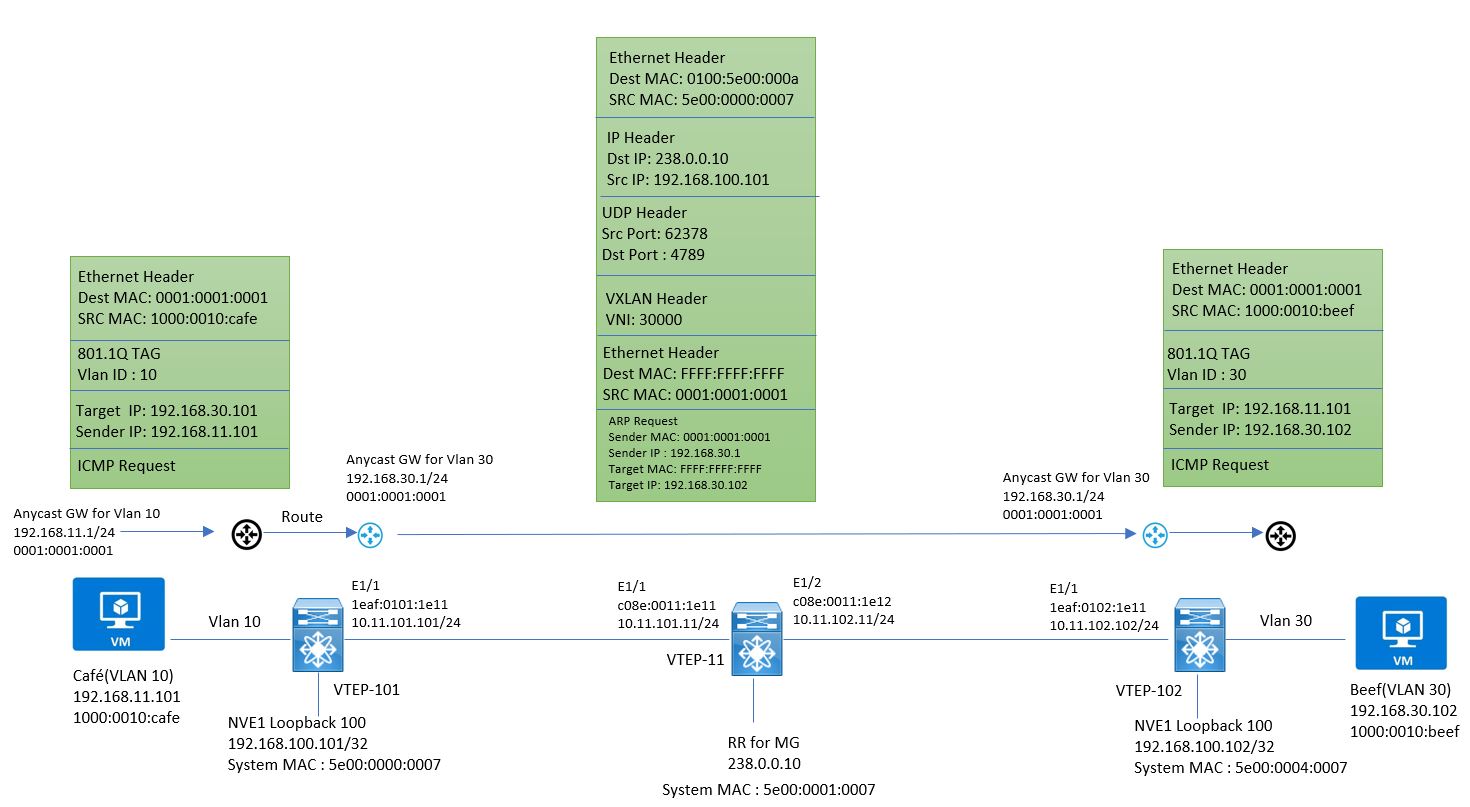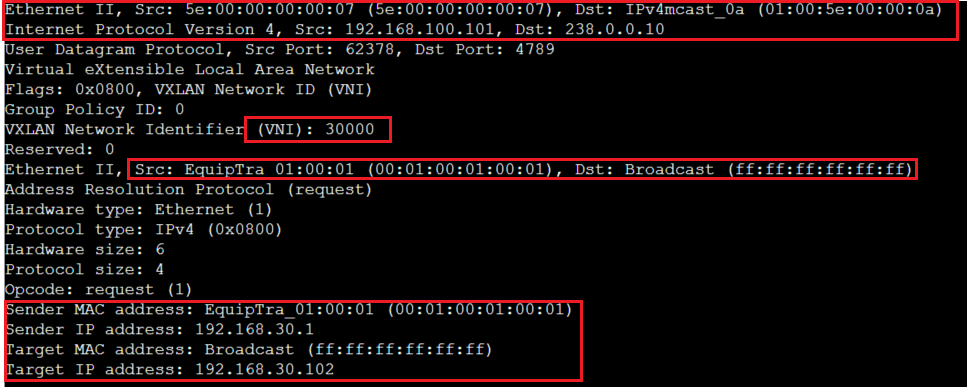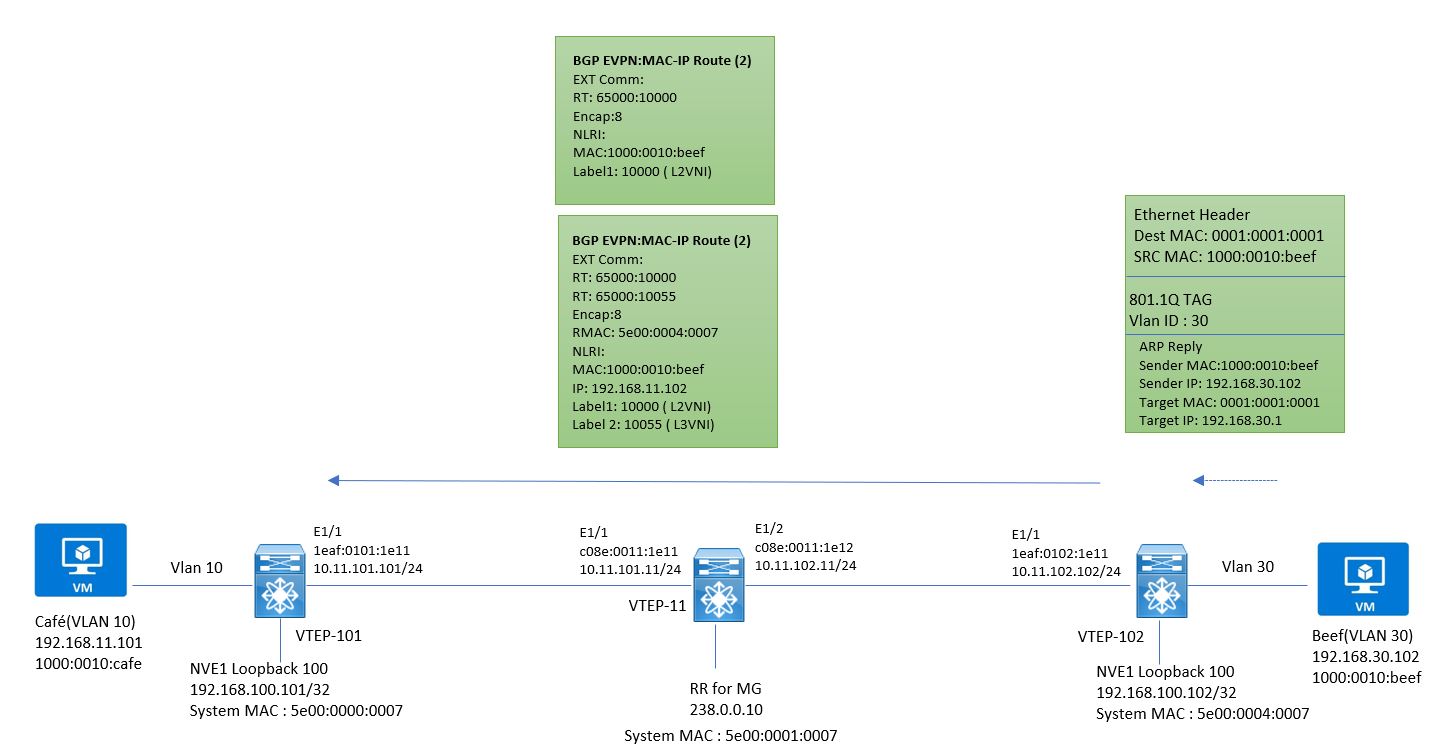EMAIL SUPPORT
dclessons@dclessons.comLOCATION
USSilent Host Communication (Prefix Advertisement)
Prefix advertisement is very much needed in BGP VXLAN, because external network can also be connected to VXLAN Fabric. Also, there might be silent host which does not generate any traffic without request.
In below figure shows the process , where CAFÉ in VNI 10000 connected to Leaf-101 starts its communication ( ping ) to host BEEF in VNI 30000 connected to Leaf-102. In this example both VTEP have VNI 30000.

Step1: Host CAFÉ starts its communication to Host BEEF.
CAFE has resolved the MAC address of its default gateway. It sends an ICMP request towards 192.168.30.102. Since the destination BEEF is in a different subnet than host CAFE, it sends the ICMP request to the default gateway. There is no response to the first ICMP request.
Step 2: Local VTEP Leaf-101 : Starts ARP Process.
VTEP switch Leaf-101 has both VNI 10000 and 30000 configured locally. Even though there is no host route to BEEF in the RIB, there is a routing entry for the local subnet 192.168.30.0/24 (VLAN 30 attached to VNI 30000) and the packet is routed from VNI 10000 to VNI 30000. After routing, Leaf-101 tries to figure out the MAC-IP binding information and it sends an ARP-Request to Multicast group used in VNI 30000.
Because this is a switched packet inside L2VNI 30000 the source MAC address of the inner Ethernet header is an Anycast Gateway MAC (AGM) address of VLAN 30, which used commonly in every host SVI. By using AGM, hosts do not have to resolve the MAC address of the gateway when moving from one VTEP to another. The destination MAC address is derived from the Multicast Group IP address
Below figure explains ICMP request captured from link between leaf-101 and Spine-11.

Step 3: Remote VTEP Leaf-102 : Process ARP request .
The remote VTEP switch Leaf-102 receives the ARP request. Based on the VNI 30000 in VXLAN header it knows that this packet belongs to VLAN 30. It removes the VXLAN encapsulation and forwards the ARP request out of all interfaces participating in VLAN 30. Leaf-102 insert 802.1Q tag with VLAN id 30 to frame and sent it out of interface E1/2.
Step 4: Host BEEF process : ARP reply.
The ARP request reaches the host BEEF and since the ARP-request target IP belongs to it, BEEF response by sending an ARP reply. The source MAC address in received ARP request is AGM, which is also used by Leaf-102. When BEEF send the ARP reply as a Unicast message by using MAC 0001.0001.0001 (AGW) as a destination, the message stops to Leaf-102. This means that Leaf-102 never forwards the ARP response message Leaf-101.
Below figure explains the Silent host discovery process.

Step 5: Remote VTEP Leaf-102 uses BGP Update
When the remote VTEP switch Leaf-102 receives the ARP reply, it learns the MAC-IP information of BEEF from the ARP payload and generates two BGP EVPN route type 2 MAC advertisement route, where the other carries MAC address and the other one MAC-IP address information of BEEF.
Step 6: Local VTEP Leaf-101: process BGP update
Local VTEP switch Leaf-101 receives the BGP EVPN Updates and installs the routing information into L2RIB of VNI 30000. This is explained in the section “MAC/IP address learning process”. Right after the L2RIB updates, Leaf-101 is able to route packet sent by CAFE to BEEF even though the original ARP-Request was never answered.
Scenario: What if all VNIs are not implemented in each VTEP
Let’s discuss the scenario, where VTEP Leaf-101 has only VNI 10000 and its do not have L2/L3 information about Silent host BEEF.
Means that Leaf-101 is not able to switch or route the packet to any hosts in network 192.168.30.0/24. The resolution for this is a prefix advertisement in Leaf-102.





LEAVE A COMMENT
Please login here to comment.